A Walk Down Memory Lane :The Days When Plaintain was the Most Important Food Crop in Our Country.2/4/2018 A large banana and plantain harvest in Trinidad circa 1900. Given the recession that we are in, now is the ideal time to focus on growing our own food. Are you aware that the plantains , were once quite important, not just to the economy but also to the culinary history of the island? The following history about the plantain in Trinidad and its many uses back in the early years is taken from renowned T&T historian Angelo Bissessarsingh’s archives "To every bred in the bone Trini, a banana is a fig regardless of variety—Gros Michel, Plantain, Lacatan or the diminutive Chiquito. When the first permanent Spanish settlement was made in 1592 at San Jose de Oruna (St Joseph), the governor of the time imposed hardship on the native population in the form of a tax or tribute which was payable in both gold and provisions. The reprehensibly lazy vecinos or Spaniard inhabitants of San Jose subsisted on these tributes rather than cultivate anything themselves so that one observer of the period could note that the plantain was the most important foodstuff in the land and indeed, starvation would be the result of its failure. Taxation up to the early years of the 1700s continued to be paid in eatables with a bunch of plantains being valued at one real or Spanish dollar. With the coming of hundreds of French planters and their slaves after the Cedula of Population was introduced in 1783, plantains were of even greater significance. Slaves for the most part were allowed provision grounds where they raised crops for their own sustenance and for sale. Aside from plantains, bananas were also grown and this is how “green fig” found its way into the echelons of local gastronomy. Whether served with saltfish or cooked with ground provisions in a good oil-down, it soon became a cheap, starchy and nutritious staple that could be turned to good purpose since the tree was easily propagated even in the most unforgiving of soils. There was abundance of plantains and bananas in the 19th century as cocoa production boomed. When the young cacao trees were set in the ground, they required a lot of shade and so in their formative years were sheltered by banana or plantain trees. Such was the alimentary value of plantains in particular that in 1858 Dr Louis De Verteuil wrote: “The plantain is extensively used in Trinidad, and on the neighbouring continent: it is a cheap, wholesome and nutritious diet, and perhaps the most productive of all alimentary plants in fact, field labourers contend that it is better suited to the support of their strength, in manual labour, than bread at any rate, it forms the staff of life to the generality of Creoles. Its nutritive value has not yet been ascertained, but Boussingault considers it superior to that of potatoes; it is also superior, in general opinion, to that of cassava and rice: it may rank as a farinaceous aliment, containing albumen and gum. The plantain is used either in the ripe or green state: in the former it is eaten either as a fruit, or prepared in various ways with sugar and spices, as confectionery. When green, it is either roasted, dressed with meat, or simply boiled, and afterwards crushed in a mortar so as to form a thick paste, which is used instead of bread.” Eventually, local production could not supply the demand of plantains in Trinidad. Well into the 1930s, more than seven million plantains and more were imported from Venezuela to plug the gap. Bananas became a vital cash crop in the early years of the 20th century. Although never produced in the same quantities as the Windward Islands (which even today are heavily reliant on this produce), considerable acreages were planted especially in the rolling hills of the Central Range. Large banana plantations producing fruit mainly for domestic consumption and occasional export to Europe existed in Tabaquite, Talparo, Biche and Rio Claro. At the Imperial College of Tropical Agriculture (forerunner of UWI St Augustine) numerous experiments were carried out in an effort to produce disease-resistant stock and increase yield of both bananas and plantains. In the annual bulletin from the Department of Agriculture for 1928, production tables showed an annual tally of more than eight million pounds of bananas being grown. The advent of the oil dollar drew labour away from agriculture and production fell but in the lean times of WWII when imported foodstuffs were scarce and the government commenced a “Grow More Food” campaign, plantains found new relevance. Thinly sliced whilst half ripe and dried, they could be pounded into a glutinous flour substitute. Plantain chips also were quite popular and substituted for potato chips at cocktail parties. Even today, no real Sunday lunch can compare to a dish of pong plantain and callaloo. Source: by the late Angelo Bissessarsingh, Virtual Museum of Trinidad and Tobago by Angelo Bissessarsingh Plantation Owners in Banana Plantation in Trinidad in early 1900s
0 Comments
The Trinidad-Demerara connection in the 19th century (By the late Angelo Bissessarsingh) In the bustling heart of the city of San Fernando in south Trinidad there is an old colonial graveyard called Paradise Cemetery. Among the many memorials of British officers, planters and clergy are a few which draw a tangible connection between the sugar-belt of the Naparimas (of which San Fernando was the capital in the 19th century) and that of Demerara in what was then known as British Guiana. One monument in particular reads: “Isabella Wilhelmina Vass (nee Osborne,) the beloved wife of Alexander Holme Vass of British Guiana, who departed this life on the 18th day of June 1911 aged 37 years. When the day of toil is done, when the race of life is run, Father grant thy weary one life forevermore. When the breath of life is flown, when the grave must claim its own, Lord of life be our crown, and grant us life forevermore. “ Alexander was a Scotsman and manager of a sugar estate in Demerara before he came to Trinidad to work around 1900. Thirty years prior, the Colonial Company had erected what was then the British Empire’s largest sugar factory on one of its largest sugar estates, some four miles from San Fernando. Called Usine Ste. Madeline, it utilized the vacuum pan process which had already been put to good purpose in Demerara as one source recounted in the 1880s: “When the canes are cut they are brought in punts along the canals and deposited. They are put between large and heavy rollers, and the juice crushed out. The liquor, having been boiled to a certain density in the coppers, is put into a reservoir, and drawn thence by suction into a vacuum pan. It then goes into the centrifugals, the rapid revolving movement of which cleanses the sugar and makes it bright and dry, fit for immediate use. It is not necessary at this point to enter into any technical details. Suffice it to say that every possible experiment has been tried to increase the yield of the cane and improve the quality of the sugar, until now the Demerara crystals have a world-wide reputation. In Demerara an average of 2^ to 3 tons of sugar may be expected from an acre of cane. Upon estates particularly well situated, the yield is greater.” The Usine Ste. Madeline quickly became a central refinery for a couple dozen estates which produced the bulk of the canes in the Naparimas. Moreover, from the 1880s onward, a significant peasant farmer class had been established when thousands of indentured Indians (who began arriving in the island as labour in 1845) settled and became small cane farmers. These smallholders produced as much as 20% of the intake of Usine Ste. Madeline which was fed by a vast private railway network that fanned out over many miles. The rail yard was described by J.H Collens in 1887 as follows: “When a stranger, during crop season, enters the busy mill-yard, with its network of railway lines—a sort of miniature Clapham Junction in its way—its lively little locomotives, ‘ Kit,’ ‘ Dart,’ and other members of the family, hurrying in with any amount of noisy bustle from all sides, with their burden of canes in tow. Here we see seven of these small but powerful ‘ Puffing Billies,’ six being constantly on the go during the busy period, with 104 clean, strongly-built trucks, carrying six tons each, for the transport of the canes from the different estates to the central factory. Inside the yard itself are over 1″5 miles of rail, and the seventeen offshoots cover a distance of 18.58 miles, irrespective of the Cipero and Usine St. Madeleine main lines. In all, there may be said to be 24-08, or over twenty-four miles of lines, railway gauge (4 ft. 8-J- in.), belonging to the company and converging towards the works. Here, too, apart from the serious business of sugar-making, are shops where turning, fitting, and smiths’ operations are carried on,so that any breakdown of the machinery may be promptly and effectually remedied without loss of time.” The awesome infrastructural scope of Usine Ste. Madeline was hopelessly beyond the existing pool of technical competence available in Trinidad’s domestic sugar industry at the time and thus many experts from British Guiana (particularly Demerara) came to the Naparimas to manage the facility. Not only did the mechanics, boiler-men, railway engineers and mill supervisors come, but also agricultural technicians and overseers who knew how to maximise the productivity of the fields. Sugar was to dominate Trinidad’s economy at least until the 1920s when the oil industry got underway and thus the estates of Demerara were a steady supply of trained personnel for Usine Ste. Madeline and the Colonial Company. Even the sole newspaper in the Naparimas, the San Fernando Gazette (1850-96), published news items from Demerara thus exemplifying the solid link between the two territories. Common reprints were obituaries like this one: “Mr. Templeton in Demerara. Aged 70 years. Partner in the firm of Pasley, Templeton and Co. of Demerara. Lived in the tropics from age 17, arrived from Trinidad about 1840 and had a dry goods business. Reported from the Argosy and Demerara Chronicle 24th April 1888” Not all of the newcomers from Demerara were sugar-specialists. Some, like the Chinese Austin family, settled in Cedros in the far south-western tip of the island around 1890 and began manufacturing carbonated drinks. Indeed, almost the entire soft drink industry in Trinidad, at one time, bought its bottling and aerating equipment from Alexander Russell and Co. in Georgetown. Popular brands like Serra Kola Champagne and McShine’s aerated drinks owed their existence to machines imported from Georgetown. Though now largely forgotten, the ties between British Guiana and Trinidad during the reign of King Sugar greatly contributed to the economic well-being of the latter colony. This 1890s photo shows croptime at Usine Ste. Madeline which was the largest sugar refinery in Trinidad and the British Empire when it was built in 1870. Many of its senior technicians were from Demerara’s sugar estates.
Trinbagonians have the art of doubles down to a science. Here are some thoughts on what makes a good doubles. 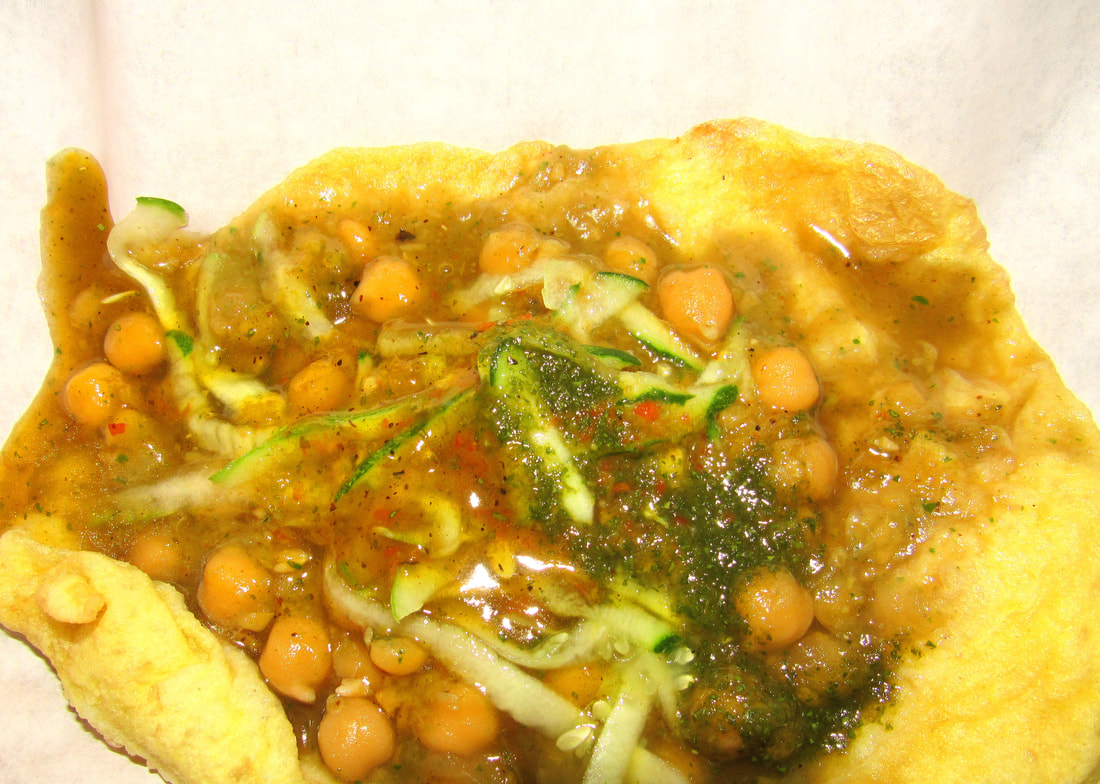 When it comes to the vast array of street food found in Trinidad and Tobago, many will attest to doublesbeing the main squeeze. Bae, as the young people tend to say. Here are a couple signs, submitted by locals, to help you choose a doubles vendor. “When you’re not sure the person is eating the doubles or making love. The look on their face is as though the doubles is hitting the right spot and for that moment in time nothing else exists in the world.” “Sometimes, all it takes is one bite to feel as though you’ve transcended and you’re convinced the sauce reached your soul.” “It must have a particular texture. The barra must be light and airy when freshly fried and the insides must have the right proportion of mashed channa to soft whole channa grains. The texture is very important and something a lot of people tend to overlook. It’s a beautiful dance of sweet, salt, and spice.” “If the doubles vendor isn’t selling Solo Apple J then what’s the point?” “The barra needs to be light without overuse of saffron and not too thick. The channa must be perfectly sized and well-seasoned. Pepper must compliment the doubles, with a touch of chadon beni and sweet sauce, but not too much.” When the pepper is hot and your nose is dripping but you still continue blissfully.” “Eating a bess (great) doubles has its own sound bite and it goes like “tssssss ahh.” “When your entire body is involved in the eating process. You involuntarily start nodding your head, your feet start moving, and for some people, even waist starts pelting (wining, also dancing).” “A doubles is great when it doesn’t even need pepper or any extra sauces. It’s so good you even lick your elbows.” “When you lick the paper and then accidentally eat it.” “When you didn’t even realise you ate three doubles without stopping. Not speaking from experience or anything! :-)” P.S. “Never trust a doubles man who uses the white paper.” Source: Dizzanne Billy, Life in Trinidad  A meal of curried turkey, paratha and cauliflower choka helped T&T born chef Dr Winnette McIntosh Ambrose win the Chopped: Gold Medal Games Baking competition in an episode aired on the Food Network on Tuesday night. McIntosh Ambrose will now compete in the US$50,000 grand finale carded to be aired next Tuesday. In 2012 McIntosh Ambrose and her brother Timothy won the Food Network’s popular Cupcake Wars competition. McIntosh Ambrose, who graduated from the Massachusetts Institute of Technology (MIT) with her PhD in Biomedical Engineering, owns and operates a boutique bakery in Washington D.C called The Sweet Lobby. This year the Chopped kitchen launched the Gold Medal Games. The tournament featured 16 “world-class chefs”. Each week, four new chefs competed utilising their greatest culinary skill — frying, grilling, baking or speed. The winner of each episode would then gain a spot in the finale and a chance to take home the coveted gold medal and US$50,000. The baking episode was the last of the four competitions. “I am super excited competing among the best of the best pastry chefs and bakers but it is so important for me to prove that I can also tackle savoury, one way that I am doing that is through my Trinidadian heritage,” McIntosh Ambrose said. The competition comprised three rounds. In the first round, the competitors were given the breakfast dough and a cut of lamb to make their appetizer. McIntosh Ambrose made stuffed bake with jerk lamb and a ginger liqueur reduction. McIntosh Ambrose explained that “bake is a casual term for quick breads in Trinidad”. For the main meal, the competitors were given the ingredients smoked turkey legs, a roasted head of cauliflower, spaghetti rings and shredded phyllo dough. “My strategy in this round is to bowl the judges over with the complex flavours of my Trinidadian roots,” McIntosh Ambrose said. She made curried turkey, paratha and cauliflower choka. For the final round, the chefs were given the ingredients banana curd, caneles, freeze-fried blueberries and hot chocolate to make dessert. McIntosh Ambrose made blueberry cake with banana-hot chocolate sauce and meringue. After the three knock out rounds, McIntosh Ambrose was selected as the lone baking chef to advance to the grand finale next Tuesday. McIntosh Ambrose said if she wins the competition she will invest the money in The Sweet Lobby. Source: Joel Julien, Trinidad Guardian, January 25, 2018 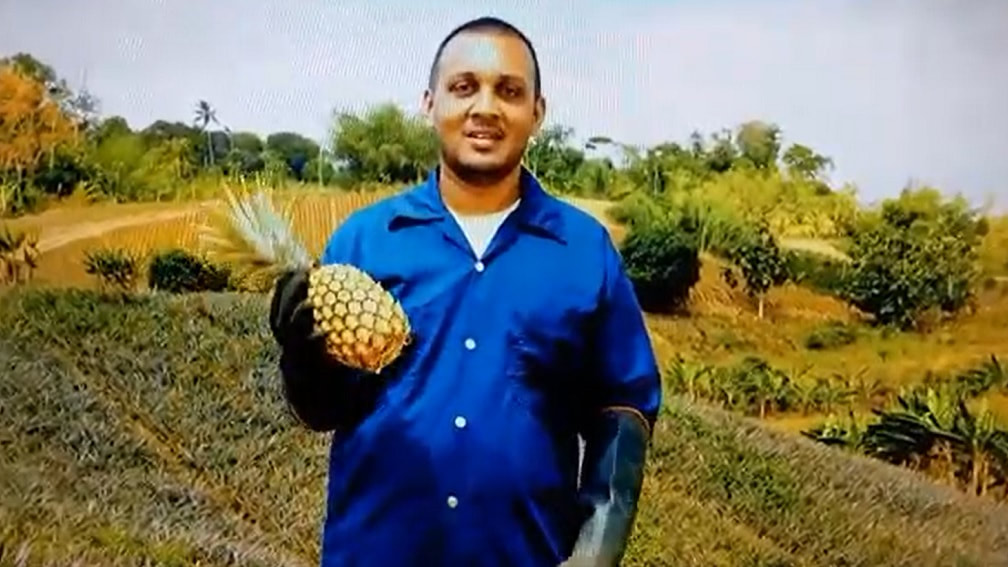 Video footage of Trinidad and Tobago's pineapples and local farmers aired earlier this month on children's television programme Sesame Street, giving well-earned exposure to the country's agricultural industry. The segment aired last month on the international children's show, which is seen in 140 countries. The new segment, called “Cookie Monster’s Foodie Truck” shows Cookie Monster and a new character called Gonger who attempt to make pizza, their favourite food. However, Cookie Monster and Gonger soon find out that the pineapple chunks on their pizza come from Trinidad and Tobago, a tiny twin-island country in the Caribbean. View the video below. (watch to the end to see how it was done) Click here to read the article
BWlA was founded on 27th November ,1939. It commenced operation in T&T in 1940. On 31st December , 2006 name of airline was changed to Caribbean Airlines which is still in operation today
|
T&T news blogThe intent of this blog is to bring some news from home and other fun items. If you enjoy what you read, please leave us a comment.. Archives
May 2025
Categories
All
|



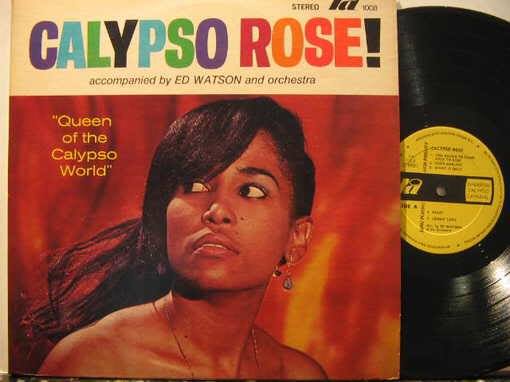
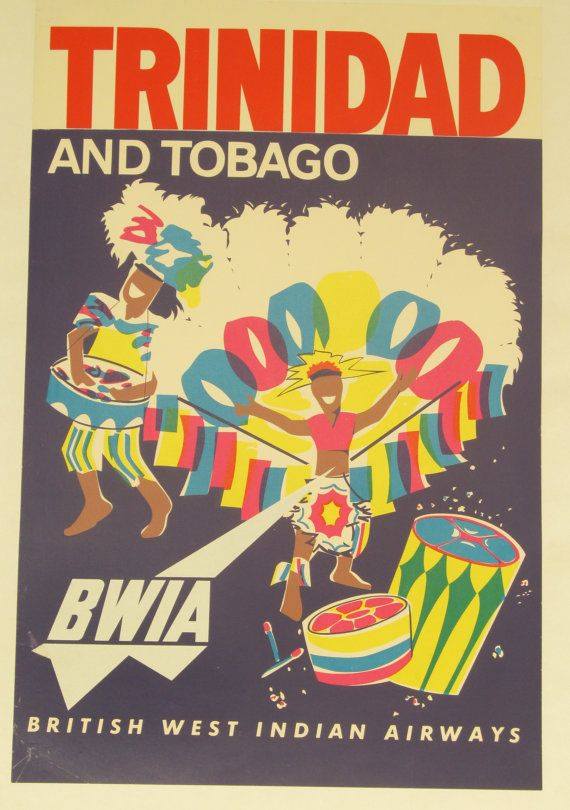
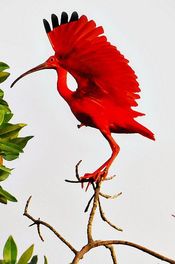
 RSS Feed
RSS Feed